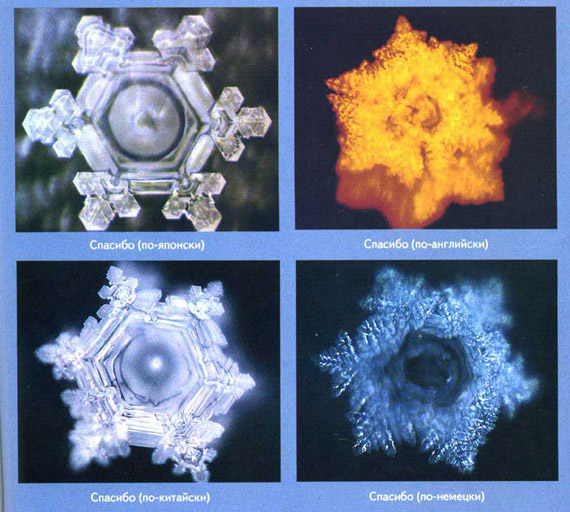Why do you need a tattoo. Psychology and Tattoo
Written by readers of "Gazeta.Ru". The editors do not always share their point of view.
Slimming underwear, bras that increase breasts by several sizes, heels, adding centimeters of growth. To be honest, I do not quite understand where there is room for "naturalness". The phrase "it's the same for life" is especially inspiring. What is the fundamental difference between “forty years a step from home without paint on your face” and “forty years with a tattoo”? Is it possible to wash off makeup in the evening (and immediately apply a moisturizer on your face)? So the tattoo can be removed if desired, a good master will do it with a laser without leaving scars.
The argument about a perfect body also makes you smile. Who in our 21st century can boast of a perfect body? An office worker with a spine distorted from sedentary work, ladies forever on diets, long and irrevocably ruining their stomachs with a “miracle diet in seven days”?
Specifically, to me, a pretty tattooed girl with a perfect body was not lucky.
A “body perfect by nature" in its usual "natural" form is not even capable of upright erect homo sapiens. According to the apologists of the “perfect body”, did I have to leave everything as it is and not get in the way of nature? I do not share the statement about perfection, therefore I carried out a number of medical modifications over my body, went against the nature and now I can safely say that “my body is my business”. I make him what I want to see. Unfortunately, there are very few healthy people.
But, alas, there are too many people who sincerely believe that those around them should do something. It is not necessary to walk in formation, but to dress in a special way, be interested only in certain things, listen to certain music and read certain books. Why? Because such template behavior makes people predictable, and therefore safe. The best defense is an attack, and so fear becomes aggression, aggression - hatred. Xenophobia - fear of strangers, turned into hatred. And hatred, as you know, is not the best character trait.
Now let's take a look at the most common statements by opponents of tattoos.
1. "How it will look in old age." As well as numerous lunges on the theme of "saggy skin with a blurry tattoo." Similar phrases can only be said by a person who is completely unfamiliar with the tattooing process. The fact is that a tattoo is not just a picture that was once applied to the skin. The tattoo must be looked after, both at the healing stage, and for the rest of your life. Once every three to five years, the tattoo is corrected, if necessary, the addition of elements, and maybe a full cover-up, that is, overlap. Paint tends to blur over time, colors fade, and skin can become deformed. An experienced master will tell you what exactly can be corrected, how to arrange the tattoo, taking into account the fact that in old age the skin will become loose and a competent person will follow the recommendations given to him. Old age, however, does not color anyone; skin tightening will not save from withering of the skin. But all people are different, someone at the age of forty and at fifty will be the owner of a beautiful and pumped up body, and someone else in his youth waved his hand.
2. "Only criminals make tattoos." I will not talk about stereotypes now, I will simply explain that prison tattoos and tattoos should not be confused. For some reason, with the word “tattoo”, bluish golden domes on the chest of a battered citizen pop up in people's heads. But why confuse ink tattoos and almost a sewing needle with tattoos that are applied with a special machine and special paints? This is the same as comparing a cart and a Mercedes, completely different things done for completely different reasons. A good tattoo will never be the fate of the gopniks, at least because of the financial issue. Even a patterned drawing in the salon is not cheap, let alone a tattoo made by an experienced master, with the development of an original sketch and thinking over future corrections.
3. "A man is beautiful as he is." I believe this belief I have already partly sorted out at the very beginning, but let's talk again. If a person is handsome as he is, then it is necessary to stop selling decorative cosmetics and close all fitness centers. Absurdity, of course, but what else is there to offer to those who do not understand that people throughout their history have sought to emphasize their beauty and originality? In addition, not all people make tattoos for the sake of beauty. Moreover, many, including myself, do not perceive tattoos as jewelry. For some, this is an extension of his body, for some, a way of self-identification, for someone an expression of his worldview. Speaking of identification and as an appeal to respected faithful commentators. The early Christians made tattoos and hallmarks with the symbols of Christ on their bodies, knight-crusaders, princes, kings, and tattoos were made by former pagans converted by missionaries to Christianity.
The fact that now every second glamorous girl is ready to thoughtlessly stuff a butterfly or wings on her sacrum, and the same glamorous boy wants to have the “wealth” character on his chest in no way makes all tattooed people hunters of fashion and beauty. Some tattoo artists generally refuse to tattoo template designs, preferring only unique sketches for which you can be proud of work. And personally, I would generally share tattoos as a tribute to fashion and tattoos made at the behest of my own soul. The former are perceived by their owners as a beautiful fenka, the latter as part of their own body.
4. "What will you do when the tattoo gets tired." This is not a statement, but a question, but for some reason its authors consider this question to be rhetorical. What girls with butterflies and hearts will do with tattoos, I don’t know, but most likely they will calmly remove them with a laser. But how can a tattoo, which has become part of myself, get bored, does not fit in my head, the question is absurd to impossibility. I can also ask exactly what you will do when you get tired of your leg, arm, eye color or skin. A well-designed and executed tattoo becomes an integral part of you, you would not recognize yourself in the mirror without it, you would feel uncomfortable. Boredom can not, except after a complete change of personality. But given the fact that thoughtful tattoos are done by adults and mature people, such a change seems unlikely to me. On the other hand, no one has canceled laser removal; over the years, technology has only improved.
5. "What will you say to your children" and also all kinds of discussion of children's topics. Let's start over with the thesis "I won’t let my minor children get tattooed." It is not entirely clear why this should be allowed or not allowed. Master, I mean a normal and adequate master tattoo artist will simply not get a tattoo for a child. If your child made a tattoo on his own in some dubious salon, it means that the salon is also to blame, and you, as a parent.
On the topic of what the children will say, I have one relationship story.
Mom and daughter are sixteen years old, no father, girl, as they say, a difficult child. Closed, unsociable, with the mother there is practically no way to build a dialogue. And then this girl made a tattoo somewhere. And her mother, learning about this, did not cause her a scandal and did not expose her from home, as some particularly fanatical citizens advise. Instead, the mother tattooed herself. And the daughter first looked at her with different eyes. It turned out that my mother is not so boring as my daughter thought about her, that you can find common topics with her and talk. Now the girl is over twenty, she brought her tattoo for a long time, and her mother made several more. The relationship is still great.
6. “By getting a tattoo, you can get hepatitis and AIDS.” That's right. By tattooing in a dirty basement with a sewing needle, you can get hepatitis. In the same way, you can get AIDS by having unprotected sex with the first person you come across. Does this mean that any sex is a risk of infection and should not be addressed at all? Of course, normal craftsmen use only disposable needles, work with gloves, and observe all safety precautions. I don’t know what grief-masters are doing, and I admit that I’m not eager to find out. Unfortunately, in Russia they still do not issue licenses for tattooing, so it is impossible to control everyone.
7. "A tattoo on a girl means that the girl is a prostitute." And on the man that he is a thief. And if the girl is blonde, then she is stupid. And if a man wears an earring in his ear, then he is gay. The list goes on and on, unfortunately, many people live by stereotypes. How surprised they are to find out how everything is in reality! Among tattooed people there are businessmen and artists, professional athletes and housewives, engineers and philologists, in short, people from various social backgrounds. What unites them all? Exclusively the very fact of the presence of tattoos, the reasons, as already mentioned, can be very different.
8. "Tattoos are ugly." Here I will not even dispute. Tastes are different for everyone. I’ll tell you a little secret: I think about 90% of the tattoos I saw on other people are ugly. Among them, more than half are frankly ugly, with curved lines, monstrous colors and blurry drawings. I emphasize that this is only my opinion, but I do not have the right to indicate that all people urgently need to get a tattoo in accordance with my tastes.
In conclusion, a little educational program.
1. Temporary tattoos do not happen. Yes, absolutely. A tattoo is a pattern that is applied to the skin with a needle. What is applied with a needle is applied for a lifetime. Everything else is mehndi, decals, and other body art. If some "master" offers you a temporary tattoo, it means that he will either drive the paint under the skin superficially, or use paints for permanent makeup. This is fraud, be prepared for the fact that after a while a vague spot will appear on the site of the “temporary” tattoo, and the master will evaporate in an indefinite direction.
2. Everyone has their own pain threshold. If someone says that the tattoo is terribly painful, and someone that does not feel at all, do not rely on these opinions. For example, during a tattoo, it’s not painful for me, or, on the contrary, it’s nice, as if a scratched place has been scratched. Very often it hurts brutal pumped up peasants, and thin girls say that they did not feel anything. Feelings you will have your own.
3. The picture will not be with you all your life in an unchanged state. Calculate in advance whether you can regularly make corrections, whether you are going to pump up, lose weight or get fat. Carefully choose a place for future tattoos. Tattoo life on the feet or palms of several weeks, the skin renews too quickly.
And finally, the most important thing.
No normal person will advise you to get a tattoo, moreover, a good master will ask you if you are ready to live with this pattern. Tattoo, like any serious body modification, is a crucial step, going to do that you must be completely confident in your decision.
In the world of psychology, there are many phobias and addictions. Some may seem harmless, but a person needs the help of a specialist. These include the "blue disease." This term is used by both tattoo artists and amateurs to “decorate” their body.
What is called blue disease?
Blue disease is an addiction that develops after a first tattoo. This may be a small drawing. After a certain time, a person has an irresistible passion for applying a new tattoo, which will complement the first. People with tattoo addiction cannot stop and cover with them all new areas of the body. This leads to the fact that there is no free space left on it.
Why people get tattoos - psychology
Psychologists identify several factors that will help answer the question of why people get tattoos. The most common include:
- desire to express oneself;
- thirst to experience new sensations;
- an attempt to hide or overcome their complexes;
- stand out among the general mass of people.
There is another reason why a blue disease can develop - an unsuccessful first tattoo. This can happen due to the fault of the client when he did not fully think through the drawing, or the inexperience of the master, which led to the distortion of the image. After this, a series of experiments begins, aimed at correcting the error to obtain the expected result. Instead of blocking the failed fragment with a professional one, some try to finish or modify it.

Why do girls get tattoos?
The psychology of tattoos in women has its own characteristics. Among the common female reasons to decorate the body, psychologists distinguish the following:
- Love rush. Many girls, being in a state of euphoria, want to get a tattoo. Sometimes they are driven by a desire to prove to their beloved that for her sake she is ready to “embellish” her body.
- The manifestation of beliefs. As a rule, these are teenage girls who are sure that others do not understand them. The reason may be radical outlooks on life and belief in something.
- Disguise scars.All girls want a perfect body, but many have scars that spoil the overall impression. With the help of tattoos, they want to disguise them, but it should be borne in mind that the scars can stretch, and the drawings will need to be adjusted.
- Tribute to fashion.Many are sure that it is stylish and beautiful.
Why do teens get tattoos?
The psychology of tattoos in adolescents has soy features. Some people think that they are adults and are able to make their own decisions on how to live on, others want to stand out among friends. After the first full drawing, they feel a certain superiority over others. Over time, this feeling fades and they want to experience it again. This can develop a tattoo addiction, which psychologists will help to cope with.

What kind of people do tattoos - psychology
The history of tattoos dates back several hundred years. From the drawings on the body it was possible to find out belonging to a certain tribe, later - the position of a person in society. In the Middle Ages, tattoos were not allowed in Europe. Today they are considered a special art. A tattoo from the point of view of psychology is a certain indicator of a person by which one can determine his hobbies or spiritual and religious affiliation.
The most tattooed man in the world
Many people, in their quest to be better than someone, know no boundaries. This applies not only to achievements in the world of sports, inventions, but also in covering his body with drawings. The most tattooed man in the world - received such a title. He broke the record of former “champion” Tom Leppard, whose body was 99.9% covered in the form of a leopard color. Lucky Diamond Rich was able to "decorate" 100% of the skin.

Lucky Diamond Rich and Tom Leppard
When Lucky was a teenager, he did not know what blue disease was and did not assume that his passion for tattoo would make him world famous. For the entire time that he spent under the typewriter, which is more than 1000 hours, several liters of ink were spent. As a result, Laki's paint appeared in the auricles, eye eyelids, gums and under the nail plates. After assigning him a “champion title”, he said that this was not the limit and new tattoos would fall on top of the previous ones. Not far from Lucky, several more tattoo art lovers left:

The most tattooed woman in the world
Not only men are capable of crazy things. Some women do not lag behind the strong half of humanity and cover their body with tattoos. The most tattooed woman in the world is from New York. She applied the first drawings to the skin in an attempt to hide a rare disease in which the skin is covered with keratinized particles and scars. Later, “having tried all the charm”, she could not stop and covered herself with tattoos by 95%.

There are several more women on whom it is difficult to find an unpainted area of \u200b\u200bthe skin:

You can talk about dependence if a person experiences a strong, irresistible desire that prevents him from leading a normal life. Tattoo is, first of all, art. And any art, from cooking to literary creation, makes our life more beautiful and meaningful. Tattoos attract the attention of others, which increases our self-esteem. We are proud to share this beauty with them.
But the problem is that any work of art is imperfect, and its charm is not infinite. Time passes, and the tattoo becomes familiar to both ourselves and others. In addition, the fashion is changing. If last year everyone pricked hieroglyphs, today, for example, flowers can be in fashion.
It is even sadder if a tattoo with the name of a former partner regularly reminds us of parting. It also happens that people just get bored of their tattoos, which no longer correspond to their outlook on life.
The easiest way to feel joy again and arouse admiration of others is to make a new tattoo
One way or another, at some point the tattoo ceases to please. She becomes indifferent to us or causes negative emotions. But we remember the inspiration we felt when we first made it, and we want to experience these emotions again. The easiest way to feel joy and delight others is to get a new tattoo. And then one more - and so on until there are no empty spots on the body.
Such a dependence, as a rule, arises in people who perceive beauty as something tangible, and not as an emotional experience. They easily fall into dependence on the opinions of others, fashion and other external factors.

Some believe that during the process of tattooing, the level of endorphin and adrenaline rises in the body, which means that neurophysiology influences their choice. However, much depends on the person himself. Different people perceive the same events differently. For some people, a visit to the dentist is a common thing, while for others it is a tragedy.
Sometimes people get tattoos to feel pain. Suffering makes their impressions stronger and more meaningful. For example, Shiite Muslims or medieval saints deliberately stigmatized themselves, and Christians sang the crucifixion torment. You don’t have to go so far as examples and remember that your friend regularly waxes her bikini area because she believes that it enhances her sexual pleasure.
Perhaps you consider the tattoo procedure a proof of your own courage. This experience is very valuable for you, as long as you remember the pain, while others pay attention to the tattoo. Gradually, the memories become less vivid, and the significance of the tattoo is reduced.
In pursuit of fashion, we get cliched beauty and monotonous art
about the author
Kirby Farrell - Psychologist, teacher at the University of Massachusetts, author of several books, including The Psychology of Abandonment (The Psychology of Abandon, Levellers Press, 2016).
The fashion for tattoos is by no means new, it is one of the ancient methods of decorating your body, judging by the fact that they are made by people in tribes that are very remote from civilization. Like any fashion, this one is also prone to ebbs and flows. At present, society is experiencing a boom in tattoo fashion, sometimes it seems that most of the townspeople go with them - especially this impression is strong in the summer.
Psychology Tattoo
Why do people get tattoos? This question has several answers. Firstly, a tattoo is information, a kind of stigma, which in some cases plays the role of an identification card, for example, among prisoners, Japanese yakuza or in other communities that have preserved echoes of primitive customs. Why exactly a tattoo? Because it is something that cannot be taken away, lost, changed - and washed away too. That is, it is assumed that a certain characteristic is unchanged throughout a person’s life. People whose life is subject to natural events is unstable and often depends on the will of other people (or gods, like primitive tribes), need something permanent, something that belongs to them by right and cannot be taken away.
Decorative tattoo, if you think about it, plays partly the same role, especially in young people. They need to declare themselves, to attract attention, to show that they have rights, at least the right to their own body.
There is a certain part of people who, without special need, without belonging to closed communities and without investing an information component in a tattoo, cover their body with plentiful tattoos. Psychotherapists tend to believe that most of these people suffer from a form of mental disorder, experiencing the need to inflict damage on their bodies over and over again. Self-harm without suicide attempts becomes an obsessive state in such people, and tattoos respond to their needs as well as possible, as they are painful and leave traces reminiscent of pain.
Are tattoos safe?
From the point of view of medicine, none of the tattoos can be considered completely safe, no matter what objections the masters of tattoo salons put forward. It’s another matter that the immune system of most people is able to cope with this danger, but it cannot be known in advance how strong the body’s defense is at the moment, or whether it will later come back to him.
The adverse effects of tattoos relate mainly to two points: the introduction of infection into the body and the ingress of toxic substances into the blood that cause allergic reactions. As for the first, then everything is more or less clear: you need to responsibly approach the choice of a tattoo parlor and a master, making sure that the instrument with which the tattoo is applied is thoroughly sterilized. It is important that there are no inflammatory elements on the skin at the time of tattooing, such as acne, pustules, unhealed wounds, etc. The skin should also be thoroughly cleaned before the procedure.
Allergies are much more complicated. Allergic reactions are divided into two types: immediate and delayed type. Immediate ones appear immediately after exposure to the allergen, and slow ones as the immune response builds up to a constant toxic effect. This can happen in a week, and in a year, and even after years. Tattoo Ink is a very strong allergic and toxic agent. Published results of studies by Canadian scientists claiming that the tattoo fashion is responsible for the increase in the number of liver lesions. It is not surprising, because it is on the liver that the function of purifying the blood from toxins located in it lies. The published data says that insufficiently sterilized needles for tattooing cause annual infection of thousands of people with viral hepatitis, which is known as the “silent killer”, as it is often detected only at the stage of liver decay. Also, the burden on the liver is to remove the toxic substances contained in the paint, which, as you know, remains in the body forever.
If you are still willing to take the risk, and think that it’s worth it, consider the following fact: the black ink for the tattoo is the most poisonous, but it can be destroyed a little easier than the others, in case you ever want to get rid of it.
How to remove a tattoo
When tattooing, needles pierce the skin at a distance of approximately 3mm from the surface. Thus, the paint is located outside the layer of skin cells that, when damaged, regenerate completely without the formation of scar tissue. For this reason, getting a tattoo is very difficult, and sometimes impossible, without the formation of a cosmetic defect. 
Tattoo removal is carried out by the following methods:
- Mechanical. This is the simplest, most rude and most effective way. This is scarification, dermabrasion, surgical removal of a patch of skin containing dyes. The method is bad in that it is guaranteed to leave scars. Which is better - a scar or already irrelevant tattoo, everyone decides for himself;
- The combination of mechanical and chemical methods. The bottom line is simple - after the surface layer of the skin, which is capable of regeneration, is ground off from the tattoo area, tampons impregnated with saline are applied, which, penetrating deeper into the tissue, the dye is discolored. The procedure is quite effective, but to achieve an acceptable result it will have to be carried out more than once. Agree, even reading about it hurts. Of the minuses - trauma, pain and the possibility that a weak drawing will still remain if the ink penetrated deep enough;
- Laser method. Today it is one of the most effective and safe. Briefly, the essence can be described as follows: the skin at the site of the tattoo is exposed to intense light flux (laser). Dark tissue absorbs photons of light, and since there is an excess of them, the tissue containing the dark pigment is destroyed, and subsequently removed from the body. Laser exposure is less painful than other methods, and does not leave skin defects. However, even removing a small tattoo will require more than one procedure, but several, in the case when the tattoo is large, you will have to be patient and undergo a fairly long course of laser therapy. The disadvantages of the method include the fact that not all dyes lend themselves well to such an effect, and therefore color tattoos are not always possible to derive in this way. Black and blue colors absorb light best.
According to statistics, 50% of people who have decorated themselves with a tattoo take measures to remove it within 10 years. How many people who regret the tattoo they have made do not make these attempts because of their rather high cost, by the way, much higher than tattooing even in a good salon, unfortunately, is unknown.
They come from professors and students, intellectuals and athletes, from adolescents and adults. David and Victoria Beckham, Angelina Jolie, Johnny Depp, Scarlett Johansson, Charlize Theron, Gisele Bundchen and other celebrities proudly show drawings on different parts of the body. There are tattoos from our experts, from fellow journalists ... I also have a tattoo. She appeared before the graduation. Now I understand: it was my way of saying that I became an adult and I can manage my life myself. The stories of other people who decided to decorate their skin with indelible prints prove that a tattoo for its owner is much more than just a fashion.
Encrypted message
On the back of the hand of a 35-year-old Daria, a successful lawyer, are the initials of her former boyfriend. “They faded slightly, but I'm glad that they are visible: let them remind you that I almost lost - myself! I was like crazy. She lived only for him, all the time thinking about him. And when he left, she was grieving for six months and couldn’t calm down ... I didn’t even know how lucky I was to leave! ”Daria lifts her hair and shows a pair of wings on her neck:“ I did it last year, just for myself. This is my freedom. ”
Skin is the boundary that separates us from others. She also tells the outside world about our inner life. “Everything that we cover or decorate our skin serves as a language of communication,” said psychoanalyst Didier Anzieu. “With tattoos, we can express the unspoken - emotions, feelings and desires.” * What are the drawings on the body talking about?
Step to freedom
“My parents got divorced, quarreled, and acted as if I were not,” explains 26-year-old Galina, the origin of the tattoo made in the last grade of the school. “I wanted a flower on my ankle so that something would please me and that my relatives would pay attention to me.” And 25-year-old Dina with a smile shows a tattoo on her arm - the memory of the day when she entered the university.
In the collective unconscious, a tattoo is an act of disobedience, a violation of taboos. “But young people use it not only for provocations. Thus they declare: “I am here,” says psychologist Alessandra Marcazzan **. - Tattoos made in adolescence refer us to the rite of initiation in the primitive tribes. They symbolized the transformation of the child, which is the property of the parents, into an adult who can do whatever he wants with himself and his body. ”
Teenagers with tattoos actually behave more freely. Pediatrician Timothy Roberts from the University of Rochester clinic in the United States interviewed six hundred and 16-year-old boys and girls and found that 83% of those who had a tattoo had sex, and only 36% of those who had no tattoo.
But not only young people with the help of a tattoo affirm their "I". Increasingly successful, successful people use it as a means of self-expression. “I don’t look like an informal girl at all, but after watching David Fincher’s film“ A Girl with a Dragon Tattoo, ”I realized that I was just like that in my soul and went to a tattoo parlor,” says Yana, 37, an economist. “I follow the dress code, but I am pleased to know that under strict clothes on my back is my own dragon.”
The desire to have a tattoo can be due to various reasons. “If earlier it served as evidence of physical endurance, an expression of protest or belonging to a particular group, today it is rather a way to achieve bodily uniqueness, a kind of identity card that can be read on the body,” said anthropologist from the University of Gottingen (Germany) Silke Wolrab (Silke Wohlrab), which investigated the motives of those who decided to take this step.

Memorial notch
On the wrist of the 29-year-old manager Vitaly is an exact copy of the drawing of his young son, with all the errors and irregularities. “I miss my son,” he admits, “because I spend a lot of time on business trips and see him less often than I would like.” But thanks to the drawing, Vitaly feels like they are still there. “Before going to different cities to study, my boyfriend and I got tattoos,” recalls 30-year-old Tatyana. - I chose an abstract drawing, many take it for a Celtic sign. To the question: "What does he mean?" - I answer: "Eternal fidelity." And for me it means just that. After five years of separation, we came together and have been living together for eight years. ” Tattoos can be symbolic signs that store a history of feelings and events.
“I have repeatedly met Jews who categorically do not accept tattoos - because of concentration camps. And I respect their choice, ”says the Parisian tattoo artist Tin-tin, among whose clients there are many celebrities. “But I have also been approached more than once with a request to put on my skin a number that one of my ancestors had in Auschwitz.” Such signs return us to important points that are easy to forget about in the daily rush.
Fashion for tattoos is a consequence of the growing speed of social change. Are we sure that our place of residence, occupation and marital status will not change in five years, in a year? Tattoos appeared as a cure for transience, as a way to do at least something for the rest of your life. You can reduce only a small tattoo, and still a trace will remain on the skin. Therefore, in our fickle world, a tattoo is more calming than alarming. What does she give? The tart, almost forgotten taste of irreversibility.
* D. Anzier “I am the skin” (Ergo, 2012).
** G. P. Charmet, Al. Marcazzan "Piercing e tatuaggio. Manipolazioni del corpo in adolescenza "(Franco Angeli, 2013).







